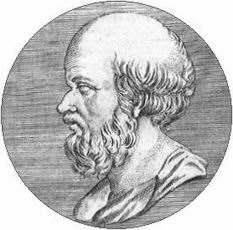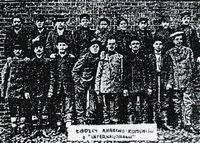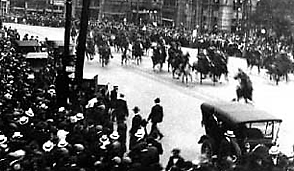|
|
Seeds of Fire: A People’s Chronology
Recalling events that happened on this day in history.
Memories of struggle, resistance and persistence.
Compiled by Ulli Diemer
|
June 21
|
|
|
The June solstice (Summer solstice in the northern hemisphere, Winter solstice in the southern hemisphere).
|
|
June 21, 240 BCE
|

|
June 21, 240 BCE (give or take a couple of years)
Eratosthenes, a Greek geographer, mathematician, astonomer, poet, and librarian, calculates the circumference of the earth.
Eratosthenes lived in Alexandria, where in 236 BCE he was appointed the librarian of the great library of Alexandria. He learned from travelling merchants that in the town of Syene, far to the south of Alexandria, on midday of June 21, the day of the solstice, the sun shone directly down a deep well, reflecting off the water below, something that happened on no other day of the year.
Eratosthenes knew that the sun would have to be directly overhead for this to happen, and he also knew that this never happened in Alexandria. Using the shadow of a vertical stick, he measured the sun’s angle in Alexandria on June 21, and found that it was about 7.2 degrees away from being vertical, about one-fiftieth of a circle (360 degrees). He reasoned that if he could measure the distance from Alexandria to Syene, he would then be able to calculate the earth’s circumference.
Traders told him that it took 50 days for their camels to travel from Alexandria to Syene. Eratosthenes knew that travellers riding camels could cover about one hundred stadia (about 11-and-a-half miles) in one day, so he calculated that the distance from Alexandria to Syene was about 5,000 stadia, or about 570 miles. He multiplied this figure by 50, and arrived at an estimate of about 28,500 miles for the earth’s circumference. (This is about 15% off the current measurement of about 24,900 miles).
|
|
June 21 - 25, 1905
|

|
|
The Lódź insurrection. Polish workers in Lódź rebel against their oppression by the Imperial Russia. The uprising is crushed by Russian troops after four days.
|
|
June 21, 1919
|

|
|
Bloody Saturday in Winnipeg: RCMP charge into a crowd of strikers in Winnipeg, killing two men and injuring 20.
|
|
June 21 - 22, 1922
|
|
|
Striking miners in Herrin, Illinois, engage in a bloody confrontation with scabs and mine guards. After three strikers are shot and killed, enraged union miners attack the mine and kill 19 strikebreakers and armed guards.
|
|
June 21, 1964
|

|
|
James Chaney, Andrew Goodman and Michael Schwerner, three young Freedom Summer workers, disappear in Mississippi while helping to register Negroes to vote. Their bodies are found six weeks later, having been shot and then buried in an earthen dam. Eight members of the Ku Klux Klan eventually go to prison on federal conspiracy charges; none serves more than six years.
The killings are part of a campaign of violence by white racists determined to prevent blacks from achieving equality. During the course of the summer-long Freedom Summer campaign, seven civil rights workers and supporters are killed, four are critically wounded, eighty are beaten, and more than 1,000 are arrested. Thirty black homes are bombed or burned, and 37 churches are burned or bombed.
|
|
For more information about people and events in Seeds of Fire, explore these pages:
|
|
|
|
|
|

